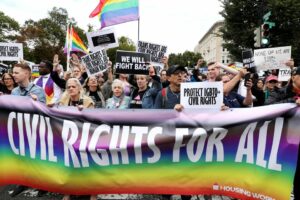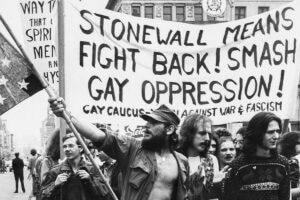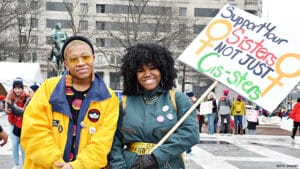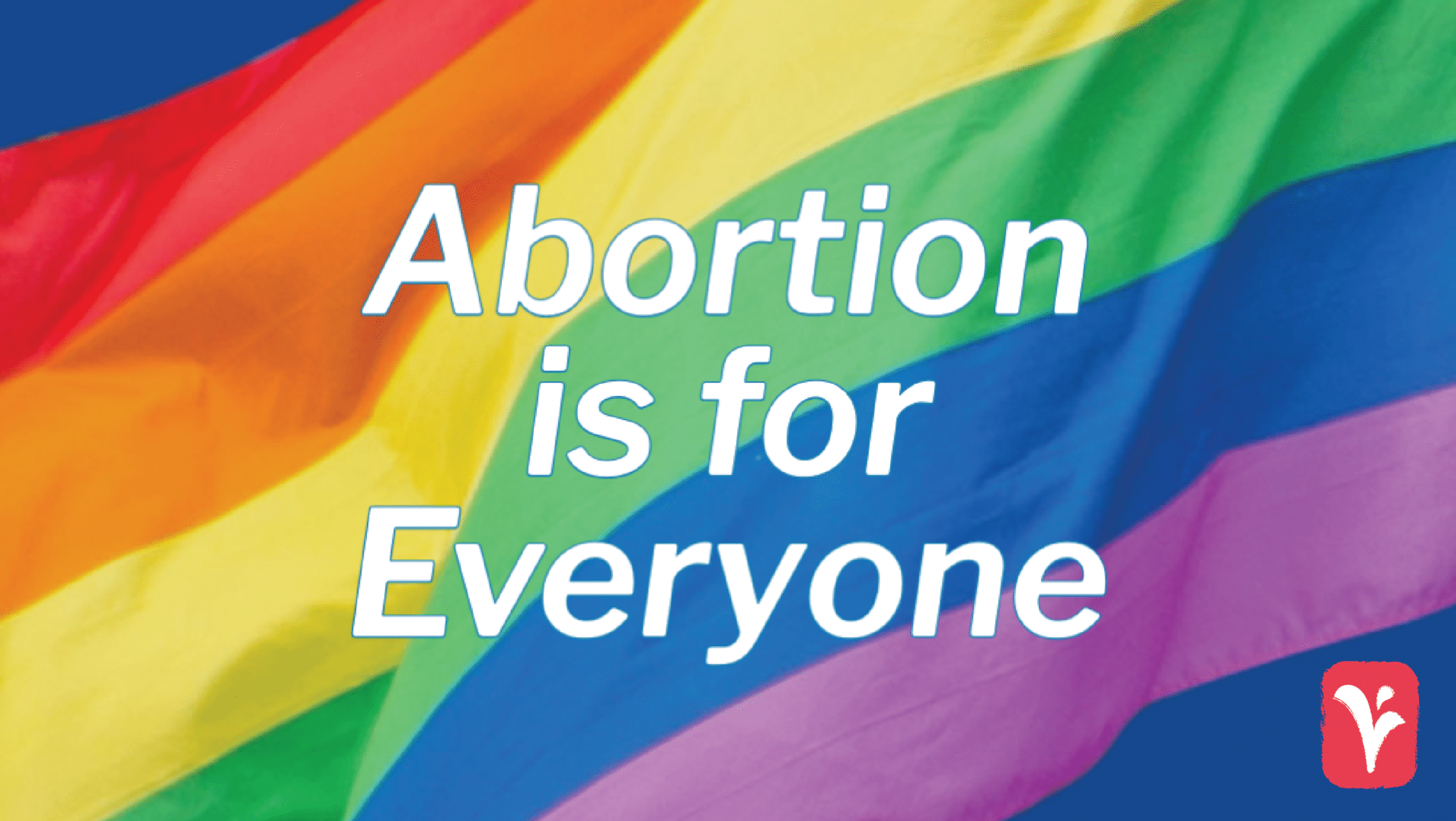
This year’s Pride Month commemorated the 52nd anniversary of the Stonewall uprising, the event that spurred the creation of Pride Month to begin with. In the summer of 1969, LGBTQ communities rioted for days outside of New York City’s Stonewall Inn—a bar frequented by the LGBTQ community who were banned from other establishments serving alcohol—after homophobic police abused their power to assault gay patrons during a raid. This led to a series of riots to demand gay liberation, and the historic moment was a catalyst to the beginning of gay rights activism; regulations that prohibited selling alcohol to queer people were overturned, and homosexuality was removed from the DSM (Diagnostic and Statistical Manual of Mental Disorders) as a mental illness following years of protests at American Psychiatric Association conferences.
But we’re far from where we should be when it comes to protecting the rights and lives of the LGBTQ community. After all, our healthcare system is only scratching the surface when it comes to dismantling oppressive systems and negligent care toward the queer community, and many medical settings lack gender-affirming and inclusive care because they falsely believe they do not serve queer patients.

This is true when it comes to abortion care, too, which is why it’s so important to remember that abortion is for everyone, not just women. Queer people have abortions. Trans people have abortions. Our assigned gender at birth is not always our actual gender, meaning anyone—whether a man, woman, or non-binary person—who has a uterus and is able to get pregnant is also able to have an abortion. But when we portray abortion as “women’s” issue, we contribute to the erasure and discrimination that gay and trans people still endure in healthcare.
If you’re passionate about reproductive justice, it’s important to know that our right to a safe and legal abortion can look vastly different depending on our identities and unique situations. A person receiving gender-affirming care, like testosterone injections, may have to use their money for an abortion, since private and public health insurance doesn’t cover it most of the time. That means potentially sacrificing one essential healthcare in order to access another. Some may also be misgendered from the very moment they call or visit the clinic—depending on the way staff interpret their voice or physical appearance—which leads to additional stigma and pressure that shouldn’t be put on the patient. Reproductive justice demands accessible and inclusive healthcare for all, where patients don’t have to gamble with their healthcare and medical professionals center queer and trans folks in their everyday practice. Keep reading for some tips on how you can center queer and trans folks in your every day life.

Practice using they/them/theirs pronouns.
Misgendering someone can be an honest mistake, but it’s important to remember that the impact of our words means more than our intent. You might not have intended to hurt someone by using the wrong pronouns, but being misgendered is often a constant thing experienced for some folks—and a constant reminder of how gendered society is. Practice using they/them pronouns with people you don’t know in your everyday life, so you can work towards breaking a harmful cycle where we assign someone’s gender based on how we perceive them. “They/them” is not only a term used to embody two or more people or things. “They” can be used singularly, and implementing this small change can help you avoid making this mistake, and prevent someone else from feeling hurt.
Example: “I had a good time at Eli’s house today. They showed me how to bake an apple pie.”
Unsure of someone’s pronouns? Ask!
If you’re unsure what someone’s pronouns are, ask! Asking each other what our pronouns are is a wonderful way to be inclusive and normalize the various pronouns a person can have. Gender as a societal construct assigns folks into two groups: male and female. But our assigned gender at birth doesn’t always align with what our gender actually is. When we normalize asking pronouns, we’re respecting each other’s gender identity and shifting the narrative surrounding it. Asking about pronouns in group settings can also make someone feel more comfortable by alleviating the worry that others might misgender them or not respect their pronouns if they shared first.
Example: “Hey! My name’s Sarah, and my pronouns are she/her. What are your pronouns?”
“Hey! Why don’t we go around and introduce ourselves and our pronouns?”
Consider saying “thank you,” not “sorry”
If you misgender someone, it may be your first instinct to apologize—sometimes overtly. But this approach may not be ideal from a trans person’s perspective. According to this viral tweet, apologizing after misgendering someone forces the person being misgendered to tell us it’s okay, but saying “thank you” suggests it’s not okay and that you appreciate being corrected. Others may find an apology appropriate if it’s followed by a “thank you,” and it’s important to remember not everyone will feel the same. However, it’s something to think about as we navigate being more mindful in our language.
Example: “Thank you for correcting me, I should have asked what your pronouns are.”
“Thanks for correcting me, I really appreciate it.”
“I apologize, thank you for correcting me!”
Look at social media bios
If you’re interacting online, chances are you come across hundreds or thousands of different people with different pronouns. Be mindful when responding to people you don’t know on social media, because being misgendered happens there, too. Folks may list their pronouns in their bio so others can avoid this mistake, so be sure to use gender-neutral terms when responding to people, the pronouns in their bio, or you can ask them directly, too.
